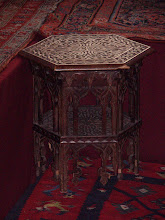

 The Botanical Garden is part of the National Museum on Zmaja od Bosne (in front of the Holiday Inn). It is a oasis in the city where one can spend time and enjoy the greenery. Also at the moment two temporary exhibitions in the ethnology department on Bosnian carpets and traditional shirts are worth seeing.
The Botanical Garden is part of the National Museum on Zmaja od Bosne (in front of the Holiday Inn). It is a oasis in the city where one can spend time and enjoy the greenery. Also at the moment two temporary exhibitions in the ethnology department on Bosnian carpets and traditional shirts are worth seeing.Le jardin botanique fait partie du musée national sur Zmaja od Bosne (en face du Holiday Inn). C'est une oasis de tranquilité dans la ville où il fait bon passer du temps et profiter de la verdure. En ce moment deux expositions temporaires dans la partie ethnologique du musée valent le détour. Une est consacrée aux tapis bosniens et l'autre aux chemises de corps traditionelles.
























